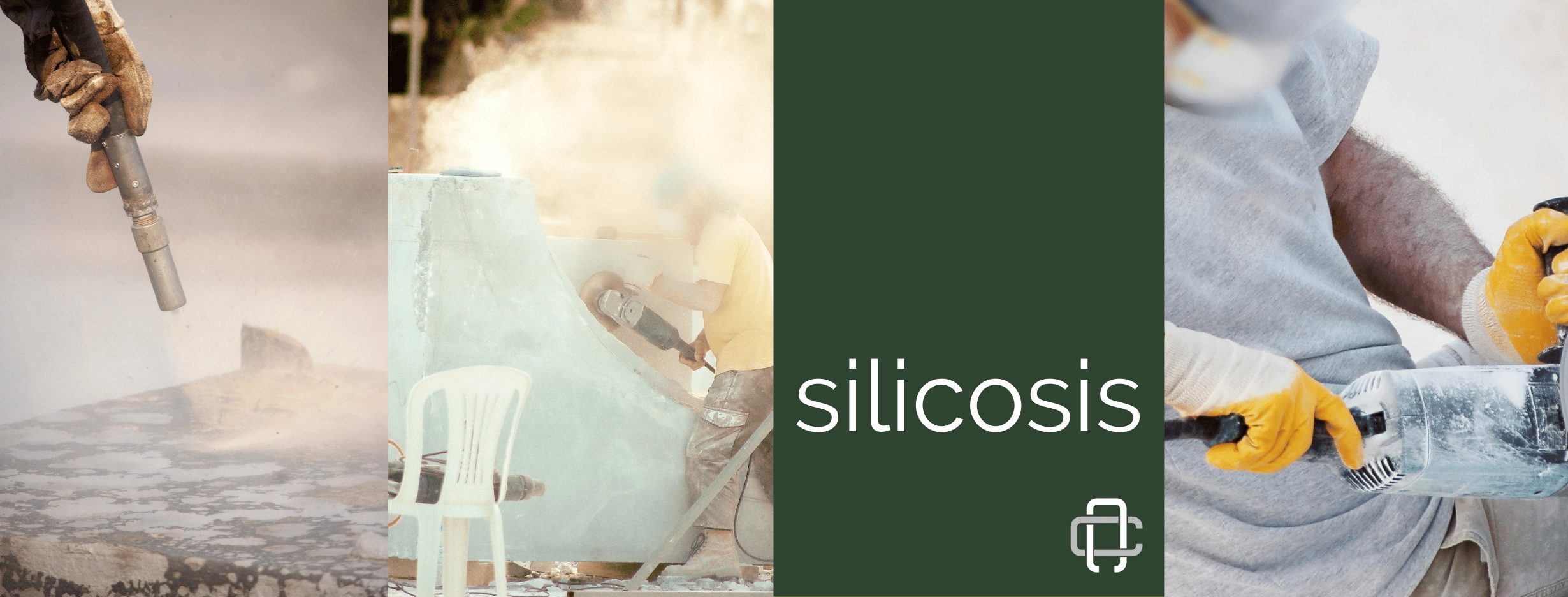Silicosis Claims: Protecting Affected Workers
Crystalline silica refers to the mineral compound silicon dioxide (SiO2). It is a mineral that is most commonly found in nature and occurs in several forms. It’s most common form, Quartz, is a component of sand, stone, rock, concrete, brick, block, and mortar which are all found throughout.
Exposure to crystalline silica often occurs as part of common workplace operations involving cutting, sawing, drilling, and crushing of concrete, abrasive blasting and foundry work. One government study (according to the New York Times) found that many workers in hydraulic fracturing, known as fracking, were exposed to 10 times the permissible level of silica.
If you work with engineered stone, quartz, granite, or other stone products, cutting, grinding, chipping, sanding, drilling, or polishing those products is dangerous and can harm you. When you perform these tasks, it releases dangerous levels of silica dust it the air and you breathe that dust in. According to the California Department of Public Health, engineered stone is the most dangerous, as it has much more silica than other kinds of stone.
According to the CDC, at least 1.7 million U.S. workers are exposed to these minerals in a variety of industries and occupations.
Inhaling silica dust can cause various health problems, including issues with your lungs, kidney, heart, and others. Silicosis is one such health problem. Silicosis is an irreversible and potentially fatal disease caused by exposure to those minerals. Preventable with workplace and environmental safety measures, the disease is at the very least life-changing and frequently disabling. Silicosis mostly affects workers exposed to silica dust in occupations such as mining, glass manufacturing, foundry work, and countertop fabrication.
There are three types of silicosis:
- Chronic or classic silicosis is the most common form of silicosis and generally occurs 10 to 20 years after low to moderate exposures to respirable crystalline silica. Cases of chronic or classic silicosis occur in a number of occupations including sandblasters, construction workers, laborers dealing with crushed concrete, foundry workers, quarry workers, workers around hydraulic fracking operations, and others.
In chronic silicosis, you may only have an abnormal chest X-ray in the beginning and then slowly develop a cough and breathing difficulty. More than a third of people with silicosis have phlegm production and cough. Chronic bronchitis-like symptoms may occur, and the lungs have additional sounds called wheezes and crackles. As extensive scarring progresses over time, you may see signs of chronic lung disease such as leg swelling, increased breathing rate, and bluish discoloration of the lips.
- Accelerated silicosis occurs 5 to 10 years after a high exposure to crystalline silica. Accelerated silicosis is again seen in a variety of occupations, including those in which you find cases of chronic silicosis.
- Acute silicosis occurs shortly after exposure—within a couple of months to two years—and follows extremely high levels of exposure. Recently, cases of acute silicosis have surged in stone countertop fabricators.
In acute silicosis, you may experience fever and sharp chest pain along with breathing difficulty. These symptoms can come on suddenly.
Each type of silicosis is complicated and poses great health risks.
Silicosis often starts as difficulty breathing or a cough that you can’t shake, feeling out of breath and tired all the time. Some of the most common symptoms of silicosis include:
- Fatigue
- Shortness of breath
- Cough, often persistent and sometimes severe
- Rapid breathing
- Loss of appetite and weight loss
- Chest pain
- Fever
- Respiratory failure
- Cyanosis (blue coloring in the lips, fingernails or skin)
- Heart issues
- Leg swelling
- Night sweats
- Pulmonary hypertension
- Difficulty breathing
Silicosis can also initially be diagnosed as a variety of other diseases, including:
- Scleroderma
- Interstitial Lung Disease
- Pulmonary Fibrosis
- Pneumoconiosis
If you are experiencing symptoms associated with silicosis or other silica-related diseases, or have been diagnosed with any of the above diseases, see a doctor or pulmonologist as soon as you can. If you are coughing, having trouble breathing, or just don’t seem to have the energy you used to, see a doctor and describe your symptoms and your occupation. If you think something at work might be causing your symptoms, talk to a supervisor. Your supervisor may send you to see a doctor who treats work-related health problems.
Before you see a doctor, write down the names of the products used at work. Ask your supervisor for a Safety Data Sheet (SDS) or Material Safety Data Sheet (MSDS). These sheets list what is in the products you are using at work and how those products can affect your health. Take these with you to your doctor’s appointment and show them to your doctor. Explain to your doctor when you started having breathing problems and if or how your symptoms have progressed.


